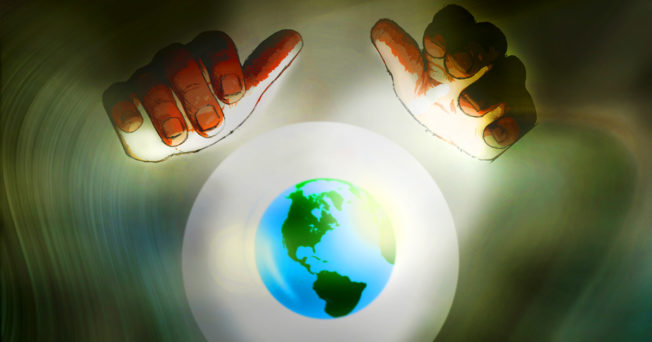Achieving ‘Mainstream Green’ is key to a more sustainable economy. Read the new report on the CMO Sustainability Accelerator hub to learn more and take action.
Editor’s note: This piece is part of a weekly Voice series by Rishad Tobaccowala, the author of Restoring the Soul of Business: Staying Human in the Age of Data.
Four questions that most companies and individuals seek answers to:
- Change Management: How does one navigate change?
- The Future: What will the future be like?
- Modern Leadership: How to lead in today’s landscape?
- Purposeful Growth: How does one grow/remain relevant?
This week’s column focuses on the future, through the lenses of global forces, how we work, and the evolving role of the media.
Nearly 50 million people define themselves as creators, and Kylie Jenner’s Instagram posts get more views than the Super Bowl and Oscars combined.
Global disruption
The challenge for most of us to realize is that future will not fit the patterns of the past—whether it be media, money, markets or mindsets. These are the six forces are driving the future now:
- Multipolar globalization: Globalization is here to stay, but it will no longer be Western-centric but a multipolar form of globalization increasingly with an Asian flavor as China and India continue to rise.
- The three divides: Every country is dealing with three internal divides: age, ethnicity and geography. In more advanced economies and China, populations are both rapidly aging and declining, creating new problems—and opportunities. The U.S. and EU are dealing with multiethnic populations among younger generations that have different values than older generations. And nearly every country is seeing a schism between their urban and rural populations in economic outlook and voting patterns.
- The Third Connected Age: Already, society has been greatly impacted by the First Connected Age (search engines and ecommerce) and the Second Connected Age (social networks and mobile phones). We have now entered the Third Connected Age, which will bring four new ways of bringing us together: artificial intelligence; the union of all of our devices in the cloud; faster communication through 5G; and new interfaces like voice, augmented reality and virtual reality.
- A rewiring of the health, education and financial industries: In many countries, these areas account for over a third of their GDP and are filled with legacy structures and rules that are now being buffeted by new competitors and technologies, and a shift in mindset among regulators and consumers.
- Climate change: Denying climate change is like denying gravity. Employees and consumers demand sustainability, and big investment firms like BlackRock monitor it to drive their clients’ portfolios.
- Vaccine Variations: Over the next two years, different regions of the world will be vaccinated at different levels. One already sees the impact of vaccine hesitancy on society in the U.S., where the regional vaccination rates vary from 15% to 75%.
The future of work
One of the foundational pillars of society—work—has been undergoing significant disruption for a decade now. Look for these changes to continue to shape our lives:
The nature of work: We are all going to be gig workers. The only difference is that the lucky ones will have longer, higher-paying gigs with better benefits. This change will be driven by employees wanting flexibility, companies wanting to make costs variable versus fixed, enabling technologies that allow for distributed and fractional work, and the shrinking half-life of skills that place a premium on plug-and-play workforces.
How work is done: Many daily tasks will be automated or technologically augmented. If there is data being generated, it will be used to stack, compare, enhance, iterate and improve.
Where work is done: The office will become like a typewriter did three decades ago in the age of computers and Microsoft Office: a relic.
Ruptures in the media landscape
Every decade or so there are significant shifts in the media landscape. We are now amid what may be the most significant rupture, whose implications for business and society are only beginning to be seen.
Media companies are broadening their horizons as the differences between offline and online media, above-the-line and below-the-line communication, and audio, video, and words narrow and blur. Even more importantly, the distinctions between social, mobile, search, and ecommerce make very little sense, yet so many organizations treat them separately. A shoppable mobile video with chat support belongs to which part of a marketer’s organization?
In addition to hybrid media organizations, another key change is determining who is a creator and what is a media company. In the United States, nearly 50 million people define themselves as creators, and Kylie Jenner’s Instagram posts get more views than the Super Bowl and Oscars combined.
Add to this the rise of voice (Amazon’s Alexa, Google, podcasting, Clubhouse); the emergence of augmented reality and virtual reality; and the renaissance of OOH as interactive media, and one can sense the entire media landscape is ready to rupture.









